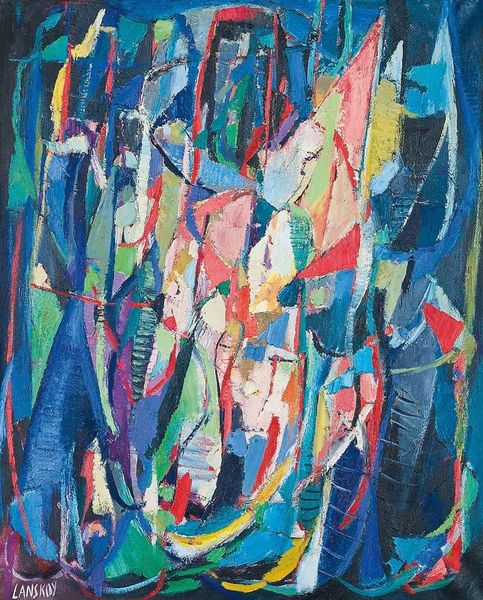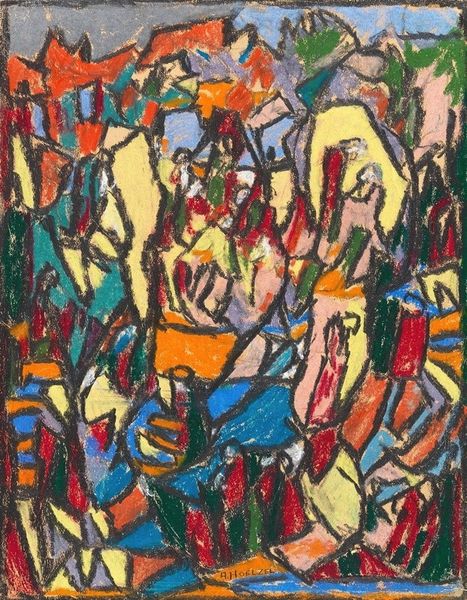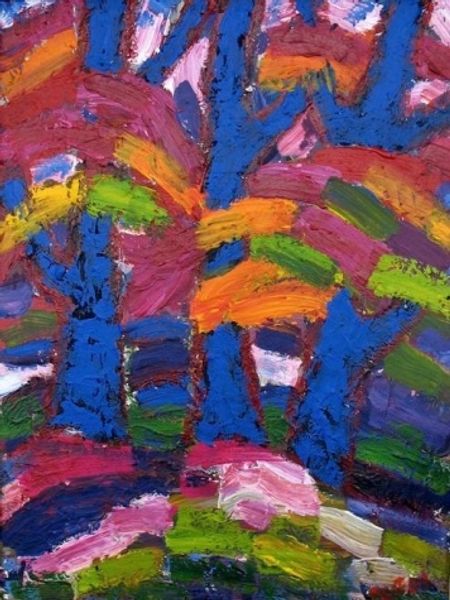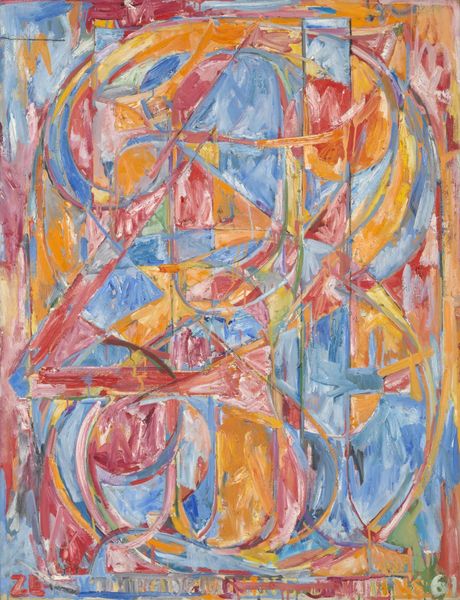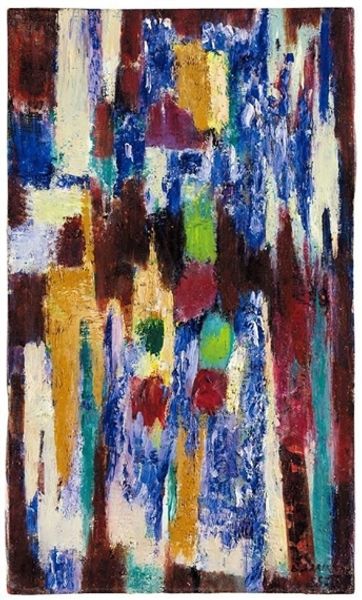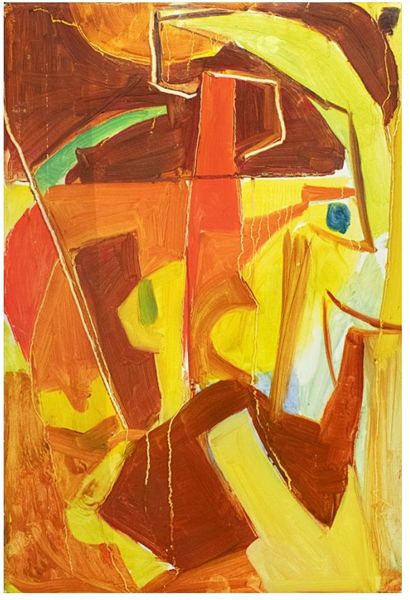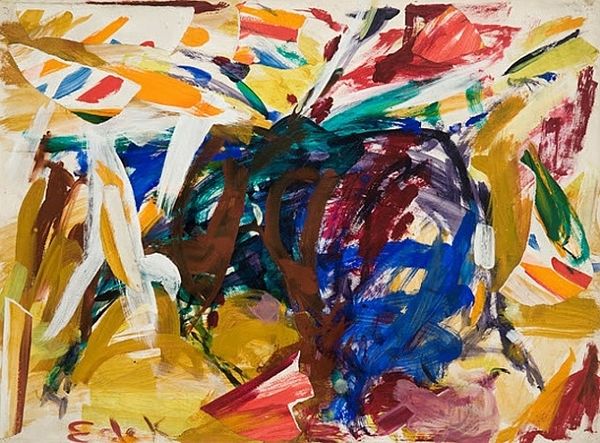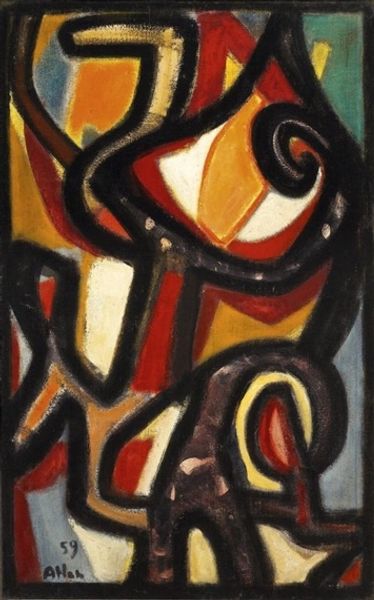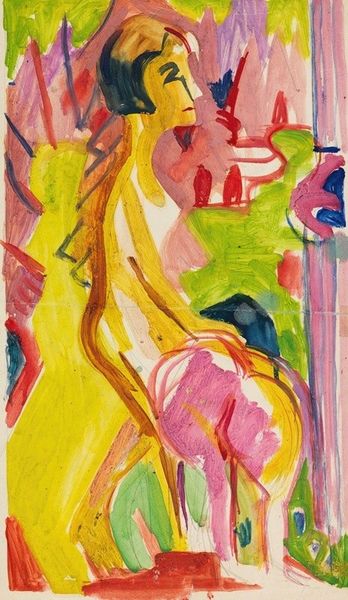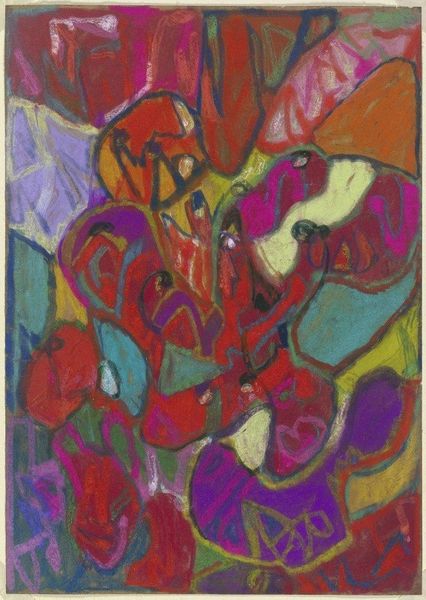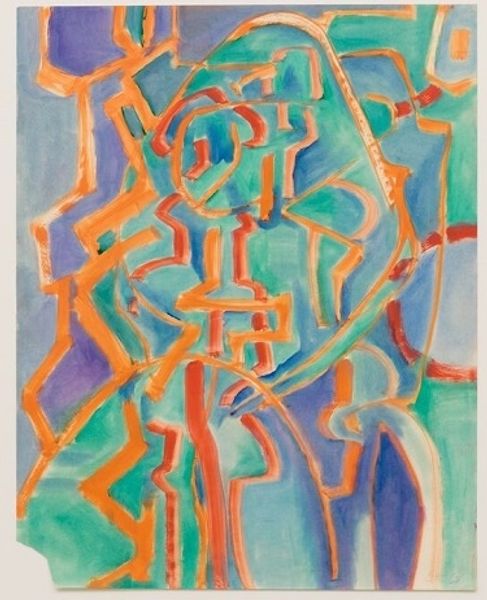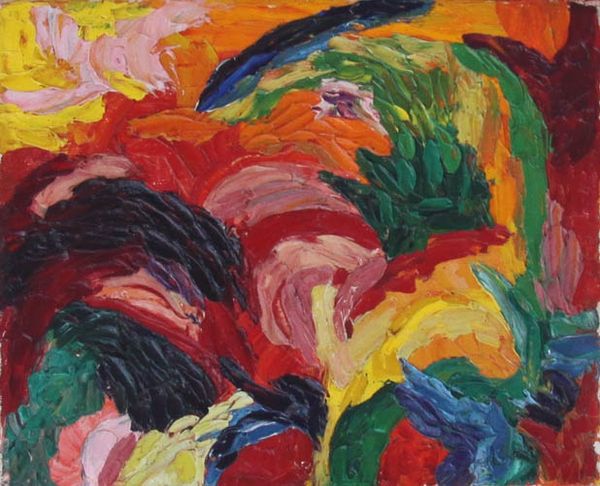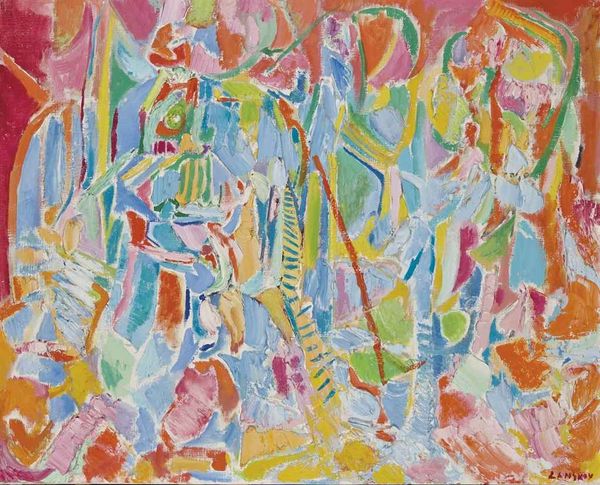
Copyright: Hryhorii Havrylenko,Fair Use
Editor: We’re looking at Hryhorii Havrylenko's "Composition (Sketch To 'Nike')" from 1960, made with acrylic paint. It’s quite energetic; the colors are so bold and applied with evident strokes. What can you tell me about this piece? Curator: Look at how Havrylenko uses impasto. It's not just about depicting a form; it’s about showcasing the physicality of the paint itself, the labor involved in applying each stroke. The 'sketch' element suggests an immediacy, but acrylic, a relatively new medium at the time, hints at mass production and accessibility compared to traditional oils. Consider the socio-political context of 1960. Does this abstraction serve as an escape from or a commentary on, the dominant ideologies? What kind of 'Nike', what victory, might he be alluding to? Editor: So, it's not just about the visual representation, but the very act of painting and the materials chosen reflecting a specific moment? Curator: Exactly. We should also think about "Fauvism" and "Abstract Expressionism," art movements referenced when discussing this work. Fauvism freed color from its descriptive role; abstract expressionism emphasized the artist's gesture and emotion. Here, we might explore whether Havrylenko sought to democratize those avant-garde traditions by embracing an affordable, accessible medium like acrylic, or was this dictated by access in his specific geographical location? Editor: It’s fascinating to think of artistic choices tied to material availability and social messages. Curator: Right, by analyzing his use of acrylics and impasto application together, we start to see a conversation about value, accessibility, and the artist’s role in a changing society, something I hadn't considered previously. Editor: I’ll definitely look at art through that lens from now on. Thank you!
Comments
No comments
Be the first to comment and join the conversation on the ultimate creative platform.
